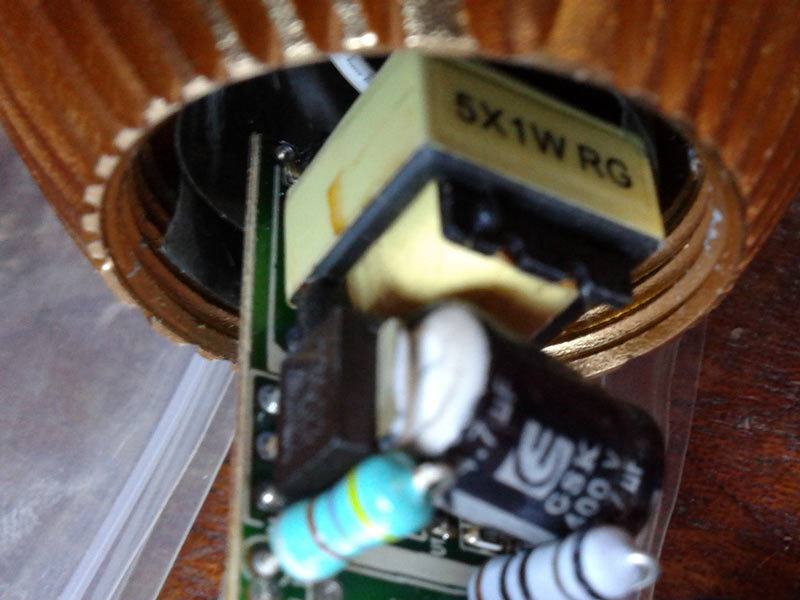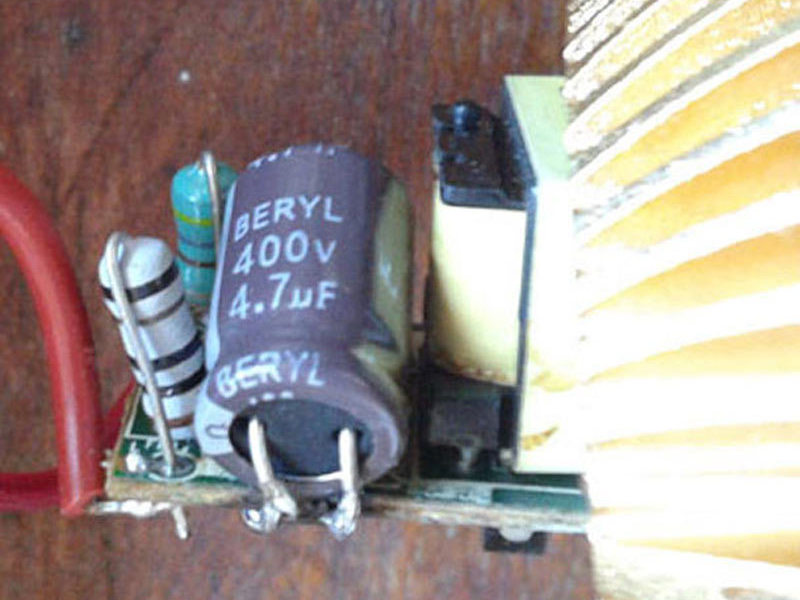If you own an E27 LED bulb that flickers at start up or doesn’t reach full brightness anymore, don’t throw it away! Just change the electrolytic capacitors in the power supply.
For more information about LED lighting, visit LED Brilliancy.
How to give new life to an old LED bulb.


The power supply in LED bulbs is designed to occupy minimum space in the lamp and at the same time ensure the most power.
The weakest link in the chain is usually an electrolytic capacitor with a working voltage of 400V. When it begins to age, the bulb will not achieve full brightness. Replacing the defective capacitor will often solve this problem.
Almost all E27 bulbs open simply by unscrewing the light bulb’s pear-shaped housing. Do it gently to avoid damaging the connecting wires. Carefully pull the circuit board from the bulb. The damaged capacitor is usually inflated and visibly damaged. If possible, read the information on its capacity and voltage. A common value for 3-5W E27 LED bulbs is 4.7μF at 400V.

Replacement capacitors are available in any store selling electronic components. When mounting the capacitor, pay attention to its polarity. Reversing the plus and minus leads will result in damage to the capacitor and possibly to the circuit as well!
The greatest enemy of LED lighting is the heat that it it generates; it will rapidly shorten the life of the lamps. If the abovementioned capacitor fails, replacing it will usually repair the lamp. However, if an SMD component fails, repairs are usually not possible. In that case, you can buy a new driver board or continue to use the bulb on 11-13V DC depending on the model.
Visit our blog at LED Brilliancy.